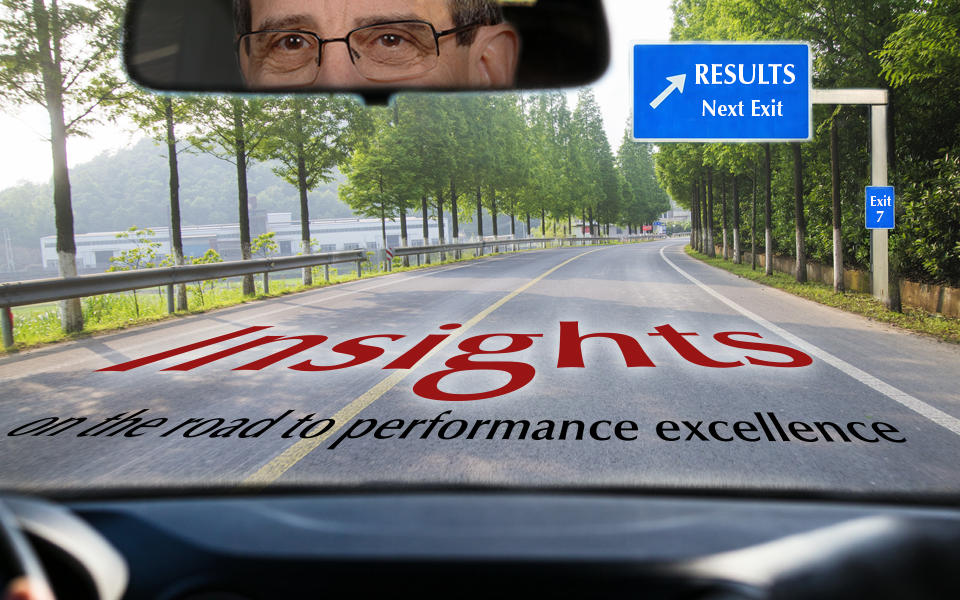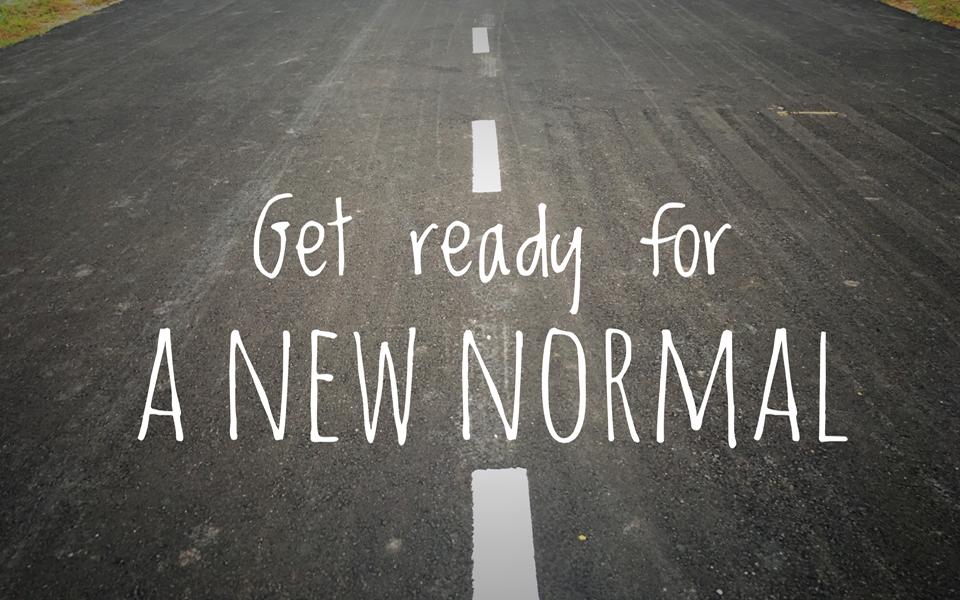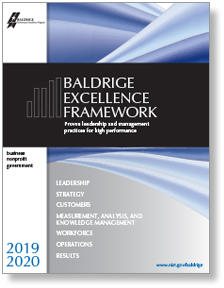Blogrige
The Official Baldrige Blog

Rest? you ask. The new normal will be about activity, you say. Actually, I believe some rest will be necessary. After the frenzy of activity since March to establish new work patterns and new home life patterns, many of us — especially those with young families — have been left totally exhausted. So some rest may be in order. However, the rest I am referring to in this posting is RE2ST3 (Resilience, Ecosystems, e-Wisdom, Societal responsibility, Telework, Transition, and Transformation).
I believe organizations that pay attention to these REST components will be poised for a successful entry into the new normal. I base my conclusion on a significant amount of reading and many conversations with people across sectors, as well as with community leaders. As I summarize the parameters of each of the RE2ST3 components, I will reference some relevant publications. While my key points are addressed under specific headings below, it is clear that many of these could have been discussed under more than one heading and that indeed the topics are interdependent and part of a systems response to creating the new normal.
RE2ST3
Resilience
Perhaps the single overarching change in the new normal is the need for all organizations to focus on resilience. Multiple definitions of organizational resilience have been put forward. For the sake of my discussion, I propose the following definition, which I based largely on a combination of thoughts from McKinsey on new operating models, Deloitte on the essence of resilient leadership PDF, and the National Institute of Standards and Technology in defining community resilience:
Organizational resilience is acting on multiple fronts to (1) prepare for anticipated hazards and, (2) protect, anticipate, and enhance employees’ and customers’ engagement, supply chain and financial performance, organizational productivity, and community well-being. Organizational resilience is a way of being that builds agility into the organization’s DNA.
Clearly embedded within this definition is the concept of agility (already part of the Baldrige core values and concepts), a concept that has been very effectively adopted by the organizations that responded rapidly to recent changes in their external environment. A hidden lesson in the successful practices of agile organizations is that organizations in general have been too centralized, too bureaucratic, too slow, too internally focused, too inflexible, and too complicated.
The BSI states that organizational resilience comprises operational resilience, information resilience and supply chain resilience. To achieve such resilience, leaders must be able to respond quickly to both opportunities and threats (agility), adapt strategy to changing circumstance (including their core business models and products), and have robust governance with a culture of trust. And organizations must address other components of the RE2ST3 approach: adopt an ecosystem mindset, embrace data-rich thought processes, and equip their employees with ongoing learning of new skills. (See also McKinsey on reimagining organizations.)

Ecosystems
Ecosystem refers to operating your organization as part of a larger whole that blends your key attributes with those of your partners, collaborators, customers, communities, and other relevant organizations, including your competitors when appropriate.
A recent Harvard Business Review (HBR) article by Mark Greeven and Howard Yu discusses the necessity of being able to move forward quickly. Businesses (and other organizations) can create advantages by leveraging ecosystem relationships to move and, especially, pivot quickly. Organizations that operate on a digital platform (see “e-Wisdom” below) have a natural advantage. Businesses that create an ecosystem with a set of interdependent businesses that can run autonomously have the opportunity to diversify revenue streams and business models, fulfill varying customer needs, and cross-sell clients and customers.
Ecosystem steps for organizations to consider as they enter the new normal include reconnecting with partners, maximizing learning through shared information, rethinking customer offerings in a larger context, accepting not-invented-here concepts and using them as idea generators, building non-traditional partnerships (e.g. with competitors or with private-sector/public-sector/government contributions). Ecosystems, by their nature, enable distributed risk management.
As we have learned through recent global events, rethinking traditional supply networks to be shorter, more efficient, and more flexible is very important. Flexibility includes operating with a just-in-case approach. Where possible, this includes localizing supply networks and conceiving a larger “ecosystem” relationship with critical suppliers by sharing strategies, learning networks, and digital platforms.
Successful ecosystems are built on establishing “trust systems.” They move from a transactional basis to a trust basis focused on mutual and shared value creation.
e-Wisdom
e-Wisdom is a term I am using for all aspects of a digitally and data enhanced economy. Use of data analytics, the Internet of Things, artificial intelligence (AI), the adoption of cloud operations, large dataset-enabled business and process modelling, and enhanced automation are accelerating at a rapid pace. While some of these tools may not impact your organization immediately or directly, they are most likely going to impact your competitive environment and new entrants that compete for your customer base, including digitally integrated ecosystems. Every business will be a technology business.
Accelerating end-to-end digitization, including use of all smart technologies (Industry 4.0) is one of five economic recovery operational trends envisioned by McKinsey and an extended network of digital solutions is seen by Deloitte as a priority. End-to-end digitization is expected to enhance productivity, sustainable resource use, agility, speed to market, and customization. Two additional trends (of the five McKinsey identified trends) involve digital tools for operational and financial transparency and opportunity identification, and the “next normal” of remote working through more use of digital communication and collaboration tools (see more on this in the “Telework” section).
In the consumer products domain, according to Nielsen data, March of 2020 saw a 60% surge in on-line consumer packaged goods purchases; 37% of that growth came from households that were new to on-line purchases or had significantly increased their use of on-line purchases. And 40% of new on-line shoppers were over the age of 55. While some of this purchasing will return to bricks-and-mortar stores, the landscape has certainly changed, and this will affect service providers and supply chains, as well.
Finally, as another example of the interdependency of the components of the RE2ST3 approach, digital platforms provide a competitive advantage in the operation of ecosystems. Shared data of all kinds and learning platforms are part of that benefit.
Societal Responsibility
There is a great expectation that, as we rebuild our businesses and economy in the new normal, we will find a way to address key societal issues: social injustice, population-based discrimination, income and quality-of-life disparities, financial and healthcare challenges of the very young and very old, building trust in our businesses and public sector, unintended consequences of technology, and decreasing our environmental impact. In an April study reported by Accenture PDF (before the death of George Floyd), 82% of consumers feared for the health of others, while 64% feared for their own health; in addition 88% worried about the economy, while 64% worried about personal job security. As a society we are more cognizant of the world we want and more impatient for all our communities and all our businesses to take leadership roles in creating that world.
In the new normal, we are likely to see a new social contract expected by employees, customers, and communities. The recent events have heightened sensitivities to societal responsibilities broadly. There is a renewed interest in organizational social purpose and how organizations, especially businesses, behaved during the last few months. Employees, communities, partners, collaborators, and most significantly, customers will continue watching behaviors and are likely to have long memories.
In a recent Disruptor League article by Pete Foley, he points out that recent upheavals have “broken more habits and established behaviors than any global event since WWII.” There is now a unique opportunity to create experiences that will disproportionately and positively impact consumer and community behaviors for years to come. Foley also points out that there will be little tolerance for economic disparities between people. He cites the simple example of experiencing long delays or denials in requests for sporting event refunds while extremely wealthy team owners ask us for empathy and forbearance.
At the nexus of our societal unrest is a new need to build trust among citizens, communities, and institutions. We expect our societal needs to be addressed with equity. We want to be physically and economically safe. We want our personal information to be protected. We want transparency in operations, communications, and our justice system. And we will expect all organizations and institutions to develop and report on metrics that build that trust.
Telework
There appears to be general agreement that working from home over the last few months has had some very positive benefits, beyond avoiding virus transmission. Benefits have included higher-than-usual employee productivity; reduced pollution due to less commuting; and greater employee empowerment, with positive outcomes.
I’ll share some recent data accumulated by Forbes, Business News Daily, and Accenture PDF:
- Remote employees work 1.4 more days per month on average, which annualizes to almost 17 additional workdays
- Remote employees take on average 22 minutes in daily work breaks compared to 18 minutes for in-office workers, but the remote employees work an additional 10 minutes each day.
- In-office workers are unproductive for an average of 37 minutes a day, compared to 27 minutes for remote workers
- 46% of people who never previously worked from home now want to work from home more often in the future, and 99% of current remote workers would like to work remotely, at least part of the time, for the rest of their careers.
- 37% of remote workers would accept a 10% pay cut if they could continue working from home.
On the other hand, when working from home, employees report higher levels of stress and more difficulty achieving work-life balance. This provides a reason to further consider how to achieve true rest in the new normal. It will be important for organizations and their employees to set boundaries between work life and home life, or else employees will feel like they are “living at the office.”
Looking ahead, remote work offers benefits to organizations and employees and may lead to rethinking how, where, and when we work. Certainly, it will lead to the next generation of digital collaboration and communication tools. Remote work benefits workers with disabilities, making it easier for organizations to attract additional employees with needed skills. Enhanced digital tools and new ways of approaching jobs will likely lead to more geographically remote employees, as well. These employees will give employers more ability to hire employees with needed expertise and knowledge of local markets.
Transition
I believe the new normal will be achieved in two stages, initially a transition and then a transformation in how we work and live. There will not be a clear break from one stage to the next; however, I find it easier to think of two phases divided by a line that is somewhat arbitrary and, hopefully, somewhat logical.
In articles on adapting to a new normal, PricewaterhouseCoopers (PwC) and Hubert Joly in HBR separately argue that countries and organizations will have to rethink the meaning of success. Gross domestic product and profitability will have to be replaced with new measures of material and social progress. Operational models will have to address social and spatial distancing while accomplishing work and sales. Organizations should focus on their greater purpose, as well as their mission: how are they making a difference in people’s and communities’ lives? Supply chains will have to be rethought so they can operate in an environment with the potential of minimal or no international exchange of goods.
Organizations will be challenged to maintain a clarity of operational focus that they have achieved over recent months. They have also achieved amazing (short-term) strategic focus. Now they need to achieve clarity for the longer term. How do they turn “crisis” into “crisis of opportunity”? Here are some questions to consider during the transition to a new normal:
- What needs to be preserved from your old business model?
- Do your organization’s core values need some rethinking?
- How do you shift from “respond” to “recover,” from “reacting” to “reinventing”? (See Deloitte Insights on resilient leadership PDF.)
- Over recent months organizations have developed a start-up mindset without deliberately seeking it. Do you try to maintain this mindset; how?
- What flexible work options will you adopt for the longer-term? What are the human resource and information technology (including security) implications?
- Will you develop a permanent talent-anywhere strategy, with members spread across business locations and geographically remote from any of your current business location?
- What is your new (agile) operating model? How do you focus on the customer, employee, and key operational processes?
- How do you permanently flatten your organizational structure and continue to empower employees who have enjoyed the “freedom” and success it brought? What happens to middle managers?
- How will your leadership team develop an organizational recovery playbook, and what will it contain?
Transformation
Although the heading “Transformation” implies arriving at a new organizational state, I think its permanence is not a given. Part of transformation will be building an agile organization capable of being resilient in every sense of the definition given at the start of this article. After the last few months, no organization can say it can’t act faster than it did in the past.
I will break this section into two parts based on my analysis of the new normal: Imperatives and Considerations.
Imperatives
- Overcoming inertia. According to McKinsey, from one year to the next companies reallocate 2-3% of their budgets. Those that create more value already reallocate 8-10%.
- Building and retaining loyal customers and employees: This will require a consideration of increased health and safety.
- Thinking about the end customer — who wants accelerated product development, customer experience and contact innovation, improved societal responsibility, and new transparency
- Rapid decision making, reduced bureaucracy, and effective, efficient communication with all employees, partners, and suppliers
- Enhanced employee empowerment and continuous learning
- Speed, flexibility, and high productivity
Considerations
- Open innovation has abounded during recent months. Is it time to participate in Innovation 2.0, seeking even wider participation?
- Innovative collaborations among government, business, and nonprofits have been established over the last few months. How will that be considered in your future collaborations, innovations, and ecosystems?
- How and how soon will you define the next destination for your organization? What will be your path to get your desired outcomes? What will be your measures of progress and do you have a rapid decision-making process for mid-course shifts or corrections?
- What will your organization’s digital transformation be? How will you generate, mine, and analyze data? Will you achieve an agile, digitally enabled cost/budget structure? What re-skilling will you do to achieve the needed capacity for data scientists with analytical and technical skills?
- Will you set fewer and bigger priorities? How will leadership time be focused on major decisions?
- What should and will your brick-and-mortar footprint be?
- How will you load balance peaks and troughs? (Some organizations will labor share with non-competing organizations.)
- What else must you reimagine?
- How will you stay connected to your organization’s purpose and communicate it to employees, customers, and your community?
A Systems Response
While it is too early to know the specific impact of the new normal on the 2021-2022 revision of the Baldrige Excellence Framework, it is clear that there will be an impact.
A final thought: the difference between RE2ST3 and ST3RE2SS is just the addition of two “S’’s. Might they stand for a Substandard (or Secretive) System? I think the key to strategic success and to employee engagement (and “rest”) is transparency, communication, and empowerment — now more than ever in the new normal.
Resources
It Is 2020. Is Your CEO Thinking about Perpetual Reinvention? (January 2020)
Archived Columns

Baldrige Excellence Framework
The Baldrige Excellence Framework has empowered organizations to accomplish their missions, improve results, and become more competitive. It includes the Criteria for Performance Excellence, core values and concepts, and guidelines for evaluating your processes and results.
Purchase your copy today!
Available versions: Business/Nonprofit, Education, and Health Care






This is an excellent article, Harry! Wonderful insight and reflections.